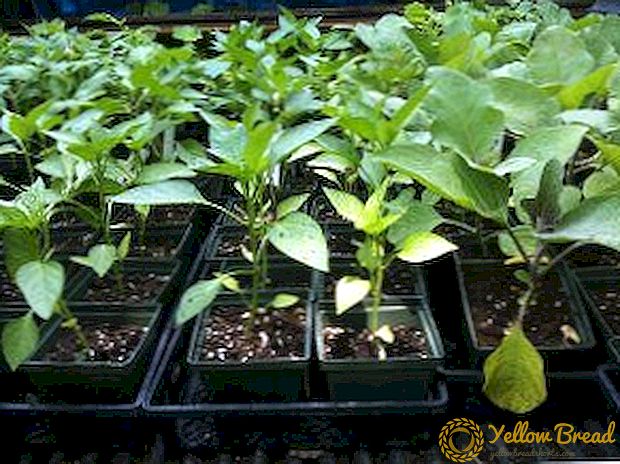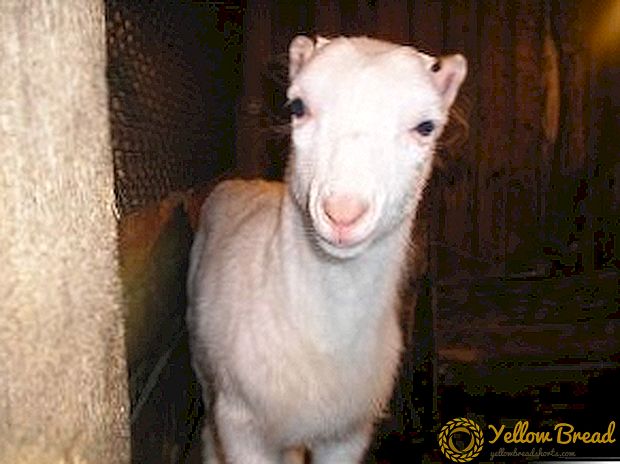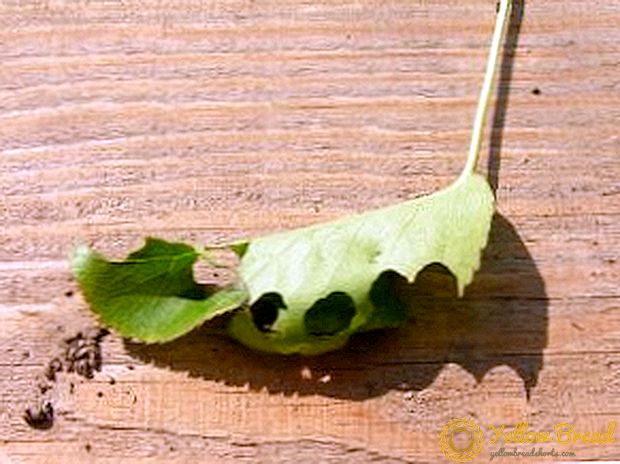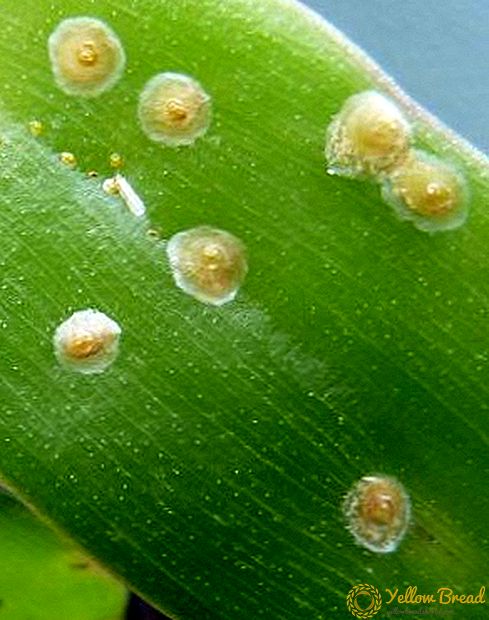
Eggplant is a very tasty and healthy vegetable, however, in order to get an acceptable final product, it takes a lot of effort, because this crop is very capricious.
The only way to get a good harvest eggplant - growing seedlings.
You can buy it in a specialized gardener's store, or you can resort to growing eggplant seedlings at home.
Today we will talk about how to grow eggplant seedlings at home? Next, we give a step-by-step instructions for growing seedlings from a photo of each stage.
Seeds
How to grow eggplants from seed at home for seedlings? Before embarking, First you need to choose a seed. The following varieties are best known:
- Joker. Has an interesting type of fruiting - carobatein which up to 5-7 fruits are located on one hand. At the same time, it is best to remove the vegetables from the bed in a timely manner in order to prevent their overgrowth. Sort early ripe and high-yielding.
- Vakula. Perfect for outdoor use, has a high yield. There are practically no thorns on the bushes, making it easier to take care of plantings.
- Sancho Panza. Is different large by weight and size fruits, each of which can reach up to a kilogram. Medium early variety.
- Negus. Highly early variety eggplant with high yields. Fruits weigh about 300 grams, however, ripen in large quantities.
- Simferopol 12/105. Bred in the Crimea, has a very high yield. Perfect for cooking caviar.
After acquiring seeds, it is best to check their quality. To do this, lower them into a weak solution of potassium permanganate. The liquid must be warm, as in the cold the seeds may rot. Float up best to throwsince the yield of such is very low. Those that remained at the bottom, you can put in the ground.
Read more about seed preparation before sowing.


Landing
Soil for sowing can be purchased in stores, and you can cook yourself. For this you need mix 2 third of humus and one third of peat or you can choose another option.
For sowing, you can choose small cups, pots or other containers. Landing is made in the following order:
- Fill containers with soil at ¾;
- Put the seeds in the center of the cups;
- Dust them with earth;
- To water.


Seedling care
How to grow eggplant seedlings at home? After the emergence of seedlings seedlings need to be put in a place with a high degree of illumination and reduce the temperature to 16-18 degrees.
In a week it will be possible to raise the temperature, but not more than 25 degrees.
It is recommended to water the seedlings with warm water, best in the morning. At the same time try to prevent excessive watering, because the roots can rot.
Seedlings need to be rotated a couple of times a week so that they do not overly stretch.


Top dressing
Thanks to feeding, plants grow and develop much better. You can feed the following types of fertilizers:
- Mullein. Dilute in water in proportions 1 to 10, feed 2 weeks after the pick;
- Chicken litter. Bred 1 to 15 and feed the same way as a cowshed;
- 12.5 g of superphosphate, 5 g of nitrate and 3 g of salt with potassium content diluted in 1 liter of water;
- Tea Brewing. A glass of tea should be filled with 5 liters of water and infused for a week, then water the seedlings;
- In the same way as tea brew, insist shredded chicken eggs;
- Wood ashto sprinkle on the ground surface.

Picking
After the appearance of two true leaves You can begin to dive seedlings. This is done because the seeds sown initially becomes very crowded, which impairs their growth and development. Too thick plantings can also cause various diseases.
For a dive you need to pick up individual containers with holes at the bottom. Soil is best used the same as when planting seeds. Picks lead in the following sequence:
- 3 hours before the procedure begins, the plants must be watered so that the earth does not crumble from their roots;
- The prepared container needs to be filled with soil;
- Using a spoon or a small spatula, carefully remove the sprout from the cup, being careful not to damage or touch the roots;
- Immerse the plant in a new container and gently sprinkle with soil.
Picked eggplants need to be watered once a week, with care not to overflow the plants.
After transplant eggplant seedlings are very sensitive to light, therefore lighting should not be too bright. Plants can even be covered with paper.
Before planting in a greenhouse or open ground for several days, open a window or a window to gradually accustom the plants to fresh air. After that, you can proceed to disembark.


Growing eggplant seedlings without picks
Eggplant seedlings do not necessarily dive, moreover, sometimes it is not even desirable, because in some varieties the roots are very weak and thin, and they simply cannot survive picks.
The essence of the dive is that each seed is planted in a separate container and grows there until transplanting into a greenhouse or into open ground.
The container is filled with earth at на, the seed is put, which is powdered with soil. The glass should be closed with a film before germination, and then opened and exposed to a lighted place. You can plant several seeds in one container, but later, after emergence, choose the strongest plant and remove the rest.


Growing eggplant in boxes
Seedlings can also be grown in boxes. In the boxes you need to put the soil prepared in advance. The soil must be compacted and grooves must be made in it with a distance of no more than 4-6 cm from each other.that need to pour a cold water. Seeds are placed in the grooves at a distance of 2-3 cm and sprinkled with the remaining soil.
After planting, the boxes are placed in a warm place, with a temperature of at least 25 degrees and after 2-3 days slightly sprinkled with water. After sprouting seedlings, boxes are usually placed in a bright place with good access to sunlight.
Planting in the greenhouse is made approximately in the middle-end of April, and in open ground - in the middle, end of May, when the soil warms up sufficiently.

Whichever way you choose, with good care you can get great fruits from which you can prepare a large number of both delicacy and everyday dishes.
So, we talked about eggplant seedlings, how to grow it properly and get a good harvest? How to grow good eggplant seedlings at home?
Useful materials
Read other articles about growing and caring for eggplant seedlings:
- Different methods of cultivation: in peat tablets, in a snail and even on toilet paper.
- All features of sowing according to the lunar calendar.
- Features of cultivation in different regions of Russia: in the Urals, in Siberia and the Moscow region.






